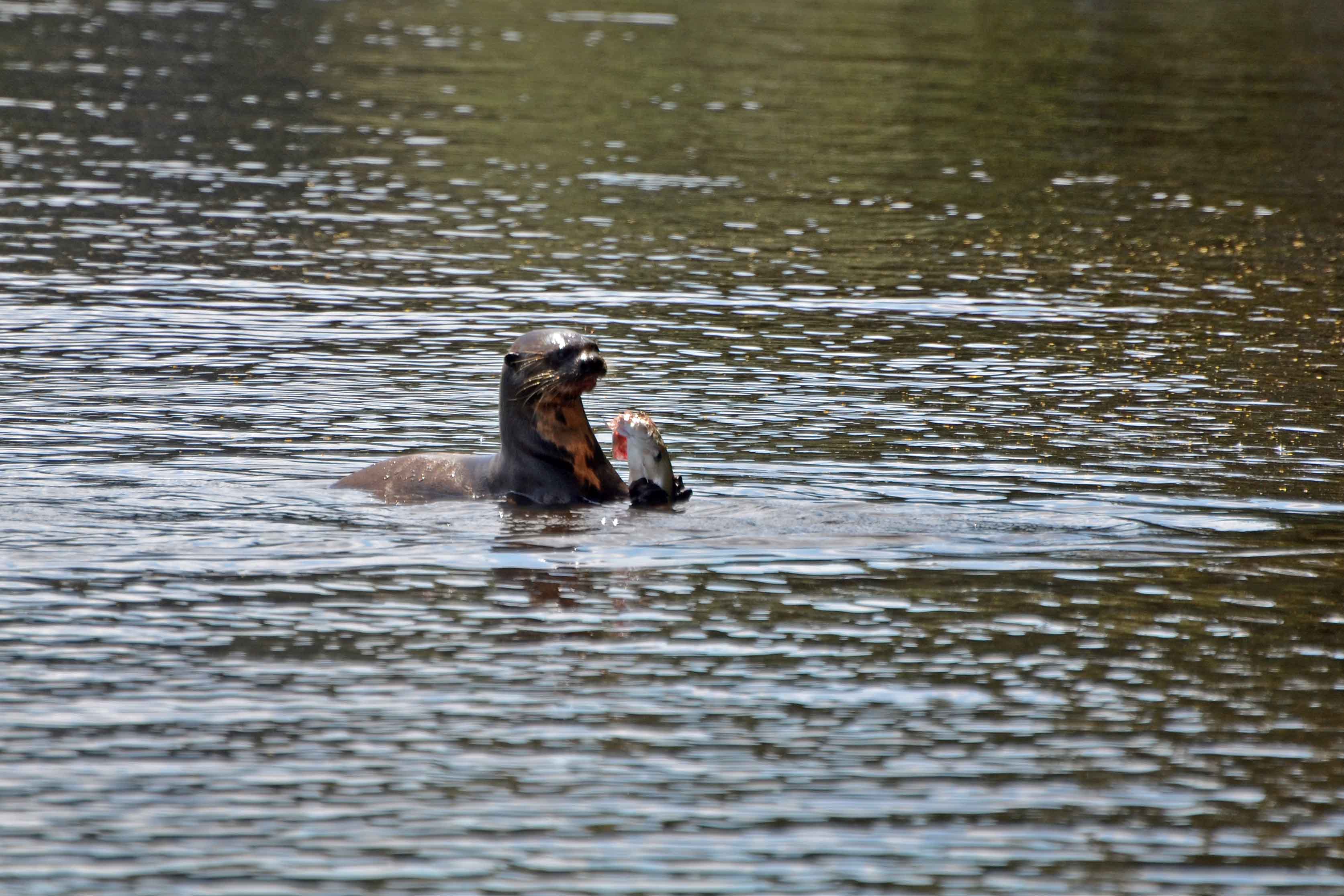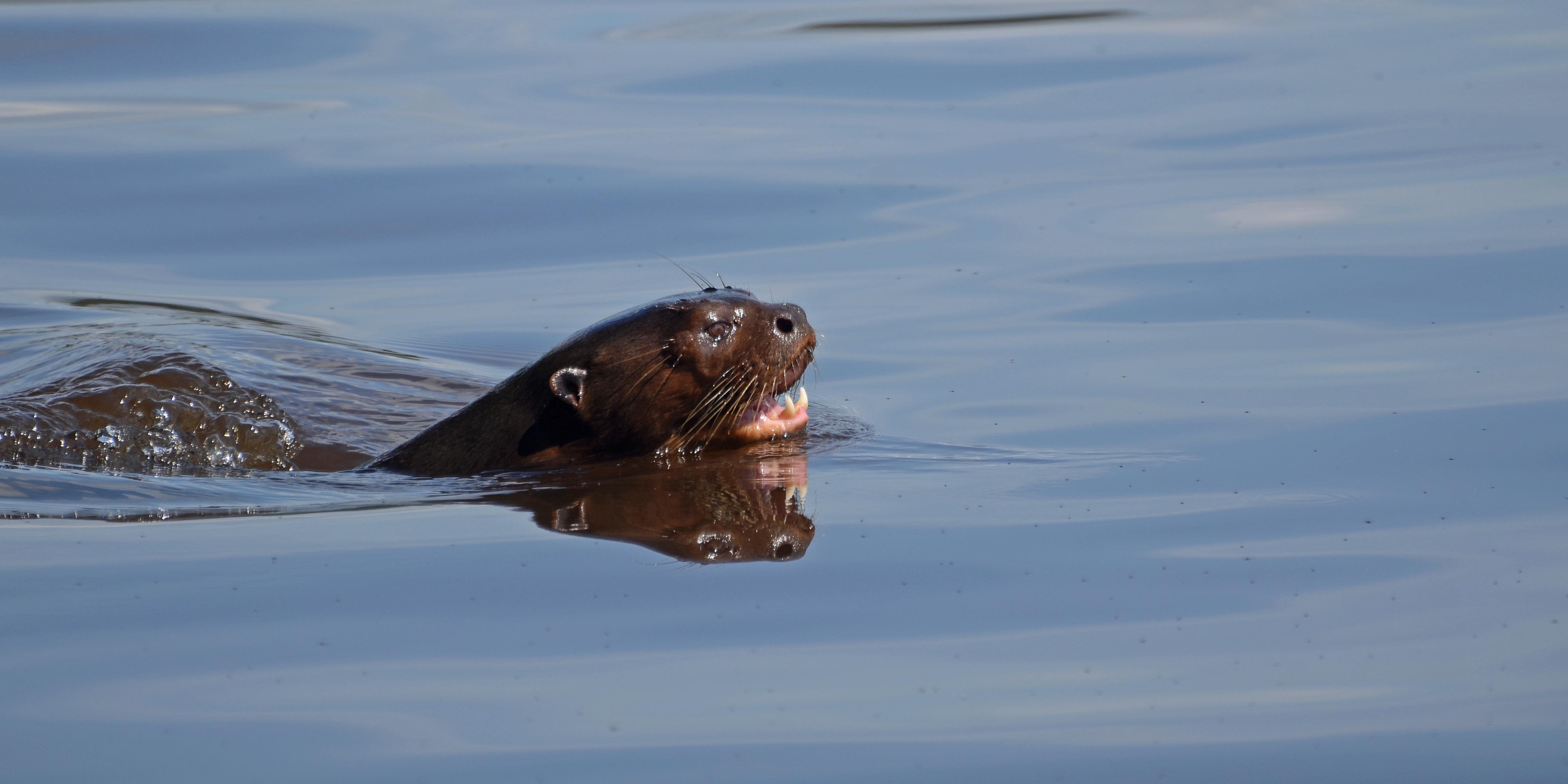General information
- Genus: Pteronura
- Species: Brasiliensis
- Also known as: Giant Otter, Giant Brazilian Otter, “River Wolf” (locally)
- Subspecies of Giant Otter: Pteronura brasiliensis brasiliensis and Pteronura brasiliensis paraguensis
- Average length: 1.5 m – 1.8 m (4.9 – 5.9 ft.)
- Adult weight: 22 – 26 kg (49 – 62 lb.)
- Diet: Fish, sometimes supplemented by crabs and snakes.
- Natural predators: Jaguars, pumas, caimans and anacondas.
- Life span in the wild: 8 years
- Litter size: 1 to 5 young (average number 2)
- Natural habitat: Lowland lakes (especially oxbow lakes), streams, rivers and palm swamps.
- Geographical range: Amazon, Orinoco and La Plata river systems
Interesting Giant Amazon River Otter facts
- They are the biggest species of all the 13 otter species and can measure up to 2 m (6 ft.) long.
- In Peru, they favour oxbow lakes, such as those in the Tambopata National Reserve where there are several, because sediments tend to sink to the bottom, making the water much clearer for hunting and the large size of the lakes provides plenty of fish to hunt.
- Giant River Otters are known to eat between 3 and 4 kg (6.6 – 8.8 lb.) of fish a day!
- Unlike most rainforest animals, they are entirely diurnal (active in the daytime).
- They are highly social animals, living in family groups of 3 to even 20 members and are known to have 9 different vocalizations for communication with each other.
- They make “campsites” near feeding sites by trampling on areas of vegetation of up to 50 sq. metres (538 sq. ft.), embedding leaves and branches into the patch and creating burrows under fallen logs. They even create “toilet areas” around its perimeter.
- They have unique markings on their throats which allow them to identify each other.
- Giant River Otters have long and numerous whiskers (from muzzle, forehead and temples), which are considered highly sensitive and aid location of prey.
- Every May (since 2011) there is a Giant Otter Festival in Puerto Maldonado including processions, photo exhibitions, educational activities and documentary screenings.
IUCN conservation assessment
- Estimated world population: 1,000 – 5,000
- Conservation status: Endangered
- Population trend: Decreasing
Sources
- IUCN Otter Specialist Group
- Giant Otter Project – SZF Peru
- National Geographic
- Duplaix, N., Waldemarin, H.F., Groenedijk, J., Evangelista, E., Munis, M., Valesco, M. & Botello, J.C. 2008. Pteronura brasiliensis. In: IUCN 2012. IUCN Red List of Threatened Species. Version 2012.2. Downloaded on 03 May 2013.

Giant Amazon River Otter fishing

Giant River Otter swimming
